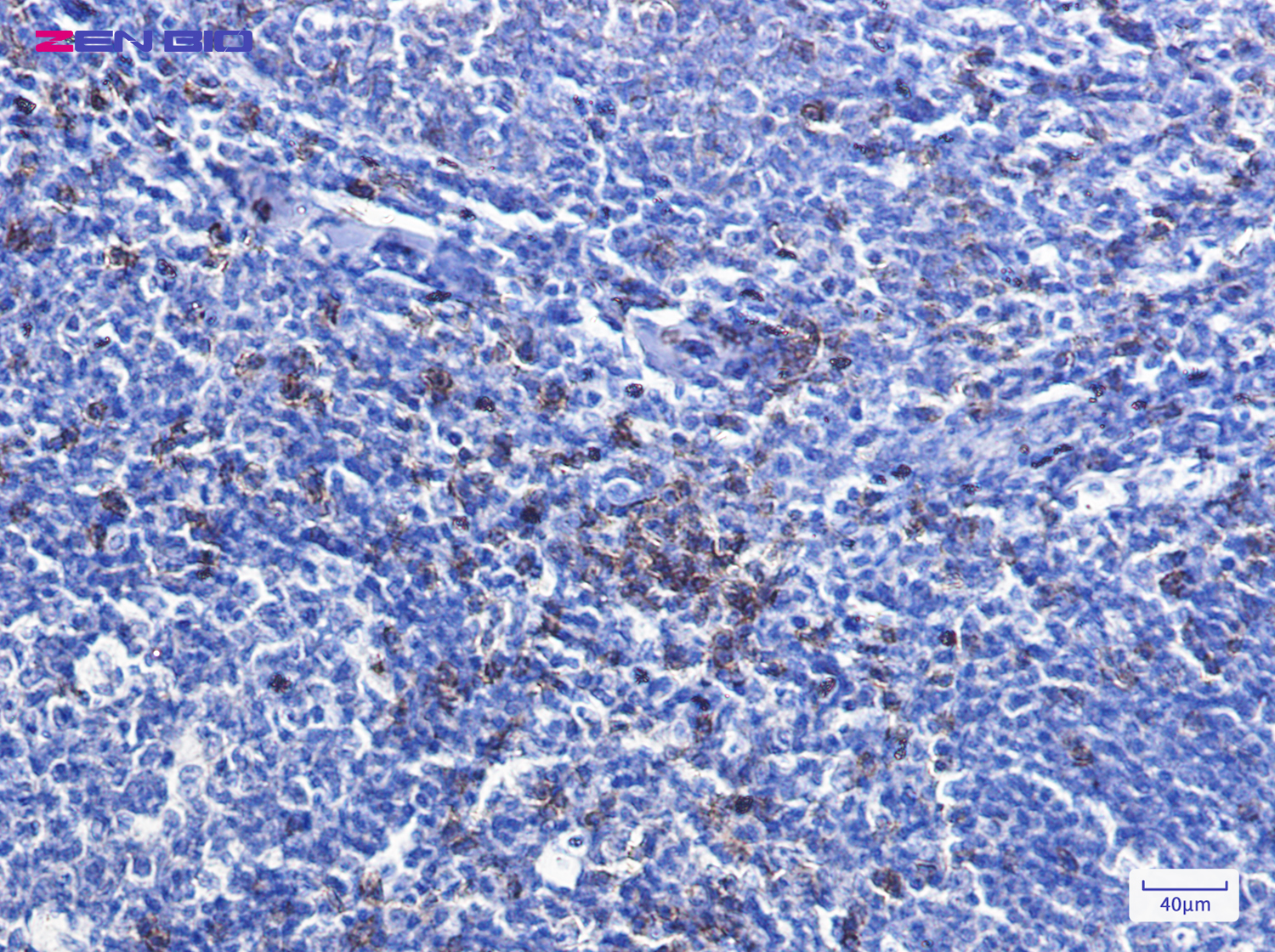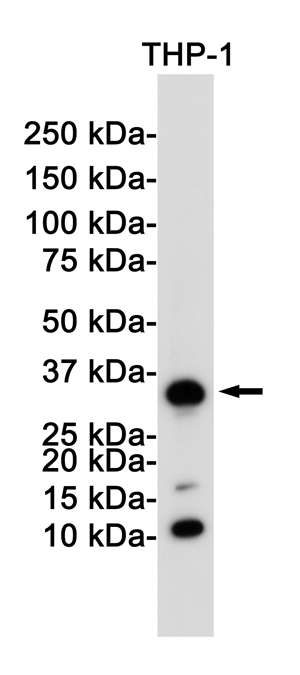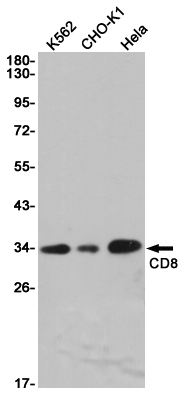-
Product Name
Anti-CD8 alpha Rabbit antibody
- Documents
-
Description
CD8 alpha Rabbit polyclonal antibody
-
Tested applications
WB, IHC-P, ICC/IF
-
Species reactivity
Human
-
Alternative names
CD8; MAL; p32; Leu2; CD8A antibody
-
Isotype
Rabbit IgG
-
Preparation
Antigen: A synthetic peptide of human CD8
-
Clonality
Polyclonal
-
Formulation
Supplied in 50nM Tris-Glycine(pH 7.4), 0.15M Nacl, 40%Glycerol, 0.01% sodium azide and 0.05% BSA.
-
Storage instructions
Store at -20°C. Stable for 12 months from date of receipt.
-
Applications
WB: 1/1000
IHC: 1/50-1/200
ICC/IF: 1/50
-
Validations

Immunohistochemistry of CD8 in paraffin-embedded Human tonsil using CD8 Rabbit pAb at dilution 1/100

Western blot detection of CD8 in THP-1 cell lysates using CD8 Rabbit pAb(1:1000 diluted).Predicted band size:26KDa.Observed band size:29KDa.

Western blot detection of CD8 in K562,CHO-K1,Hela cell lysates using CD8 Rabbit pAb(1:1000 diluted).Predicted band size:26KDa.Observed band size:29KDa.
-
Background
Swiss-Prot Acc.P01732.Integral membrane glycoprotein that plays an essential role in the immune response and serves multiple functions in responses against both external and internal offenses. In T-cells, functions primarily as a coreceptor for MHC class I molecule:peptide complex. The antigens presented by class I peptides are derived from cytosolic proteins while class II derived from extracellular proteins. Interacts simultaneously with the T-cell receptor (TCR) and the MHC class I proteins presented by antigen presenting cells (APCs). In turn, recruits the Src kinase LCK to the vicinity of the TCR-CD3 complex. LCK then initiates different intracellular signaling pathways by phosphorylating various substrates ultimately leading to lymphokine production, motility, adhesion and activation of cytotoxic T-lymphocytes (CTLs). This mechanism enables CTLs to recognize and eliminate infected cells and tumor cells. In NK-cells, the presence of CD8A homodimers at the cell surface provides a survival mechanism allowing conjugation and lysis of multiple target cells. CD8A homodimer molecules also promote the survival and differentiation of activated lymphocytes into memory CD8 T-cells.
Related Products / Services
Please note: All products are "FOR RESEARCH USE ONLY AND ARE NOT INTENDED FOR DIAGNOSTIC OR THERAPEUTIC USE"
